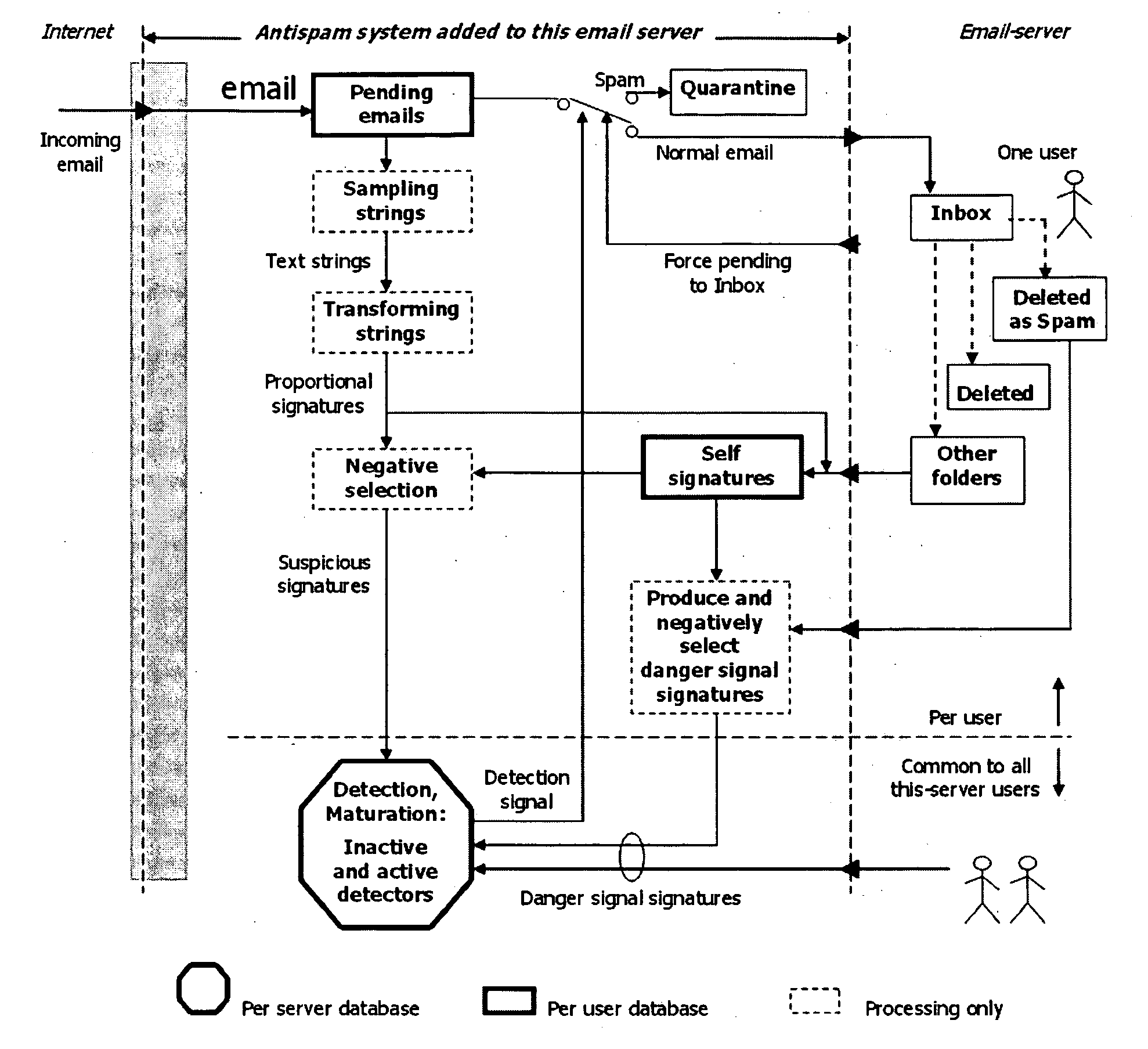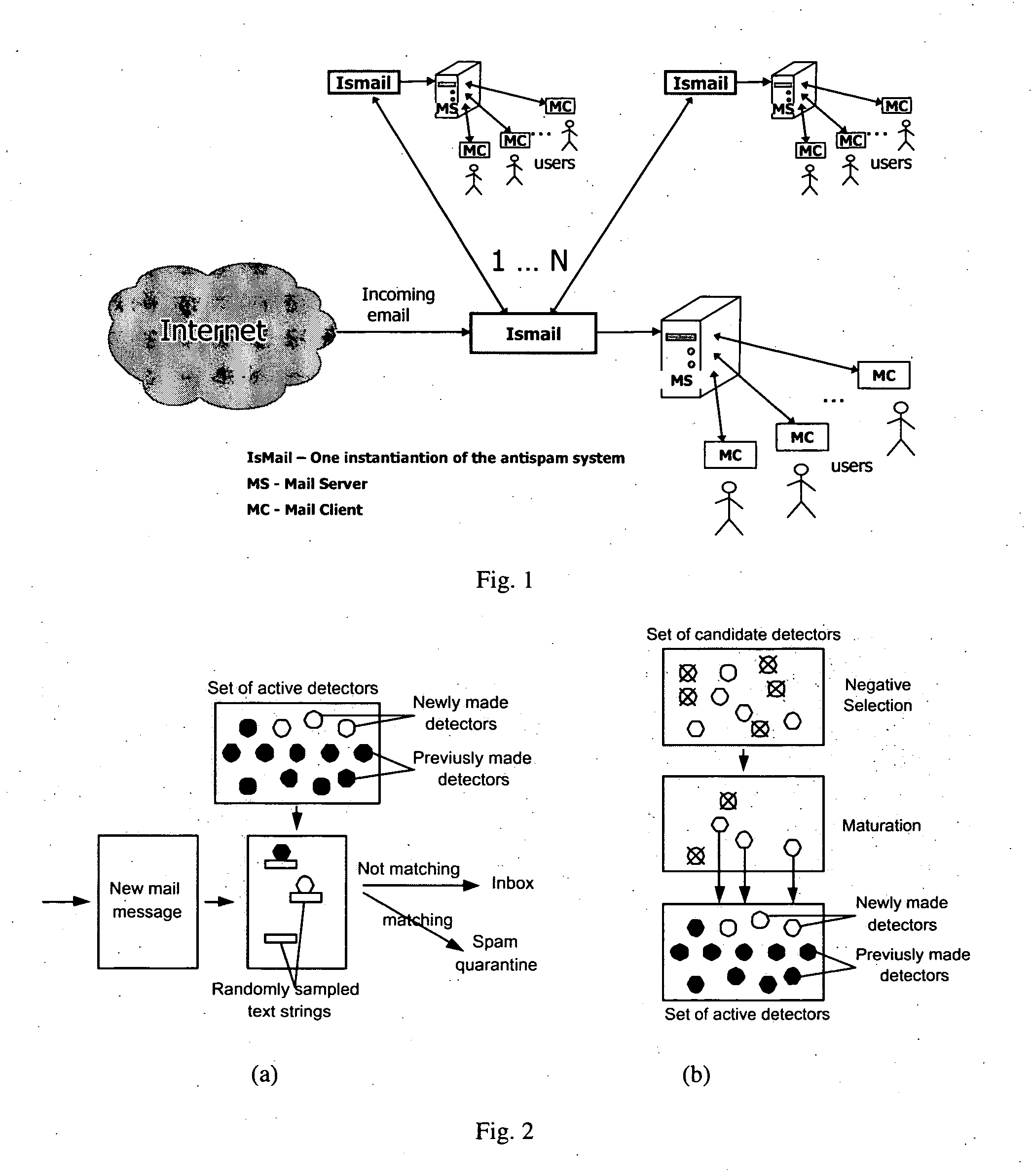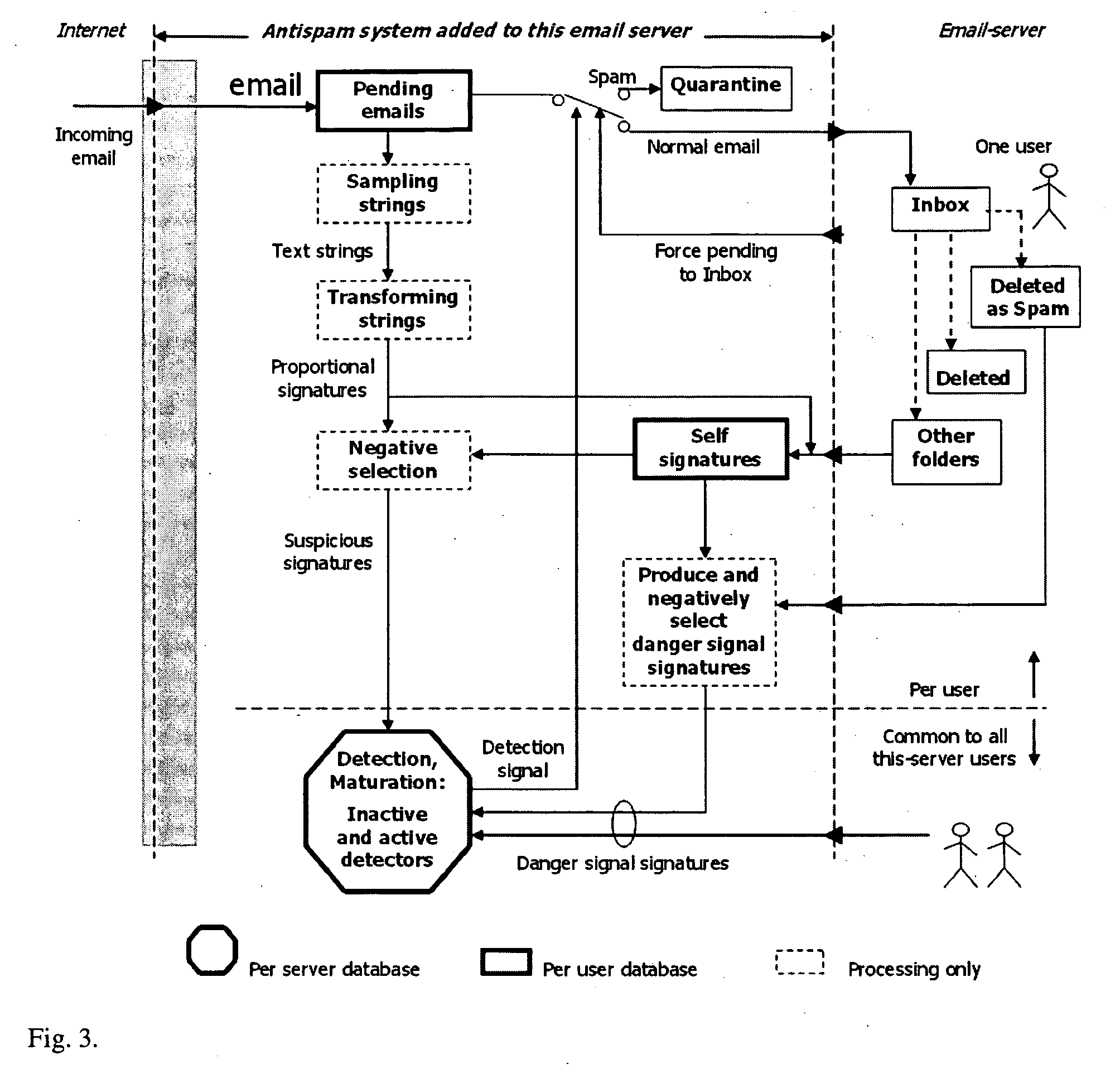Method to filter electronic messages in a message processing system
a message processing system and electronic message technology, applied in the field of electronic message filtering in the message processing system, can solve the problems of spammer to add more text and move, and not enough resistance to prevent spammer to add enough text for the attack, so as to reduce the load on the adaptive part and reduce the non-detection of spam
- Summary
- Abstract
- Description
- Claims
- Application Information
AI Technical Summary
Benefits of technology
Problems solved by technology
Method used
Image
Examples
Embodiment Construction
1 Where do We Put the Antispam System
[0029]The antispam system, which filters the incoming e-mails for the users having their accounts on the same e-mail server, is placed in front of that e-mail server towards its connection to the Internet (FIG. 1). This is the logical place of the filter, though the deployment details might differ a bit. For example, with Postfix email server, the antispam system would be interfaced to the Procmail service that comes together with the Postfix software and is technically not in front of the email server, but in front of the space for storing emails.
[0030]The antispam system designated to one e-mail server and its users can be an application added to the e-mail server machine, or it can be a computer appliance running such an application. A few such antispam systems can collaborate with each other, and each of them is also interfaced to the accounts it protects on the e-mail server it protects. The collaboration to other antispam systems can be tru...
PUM
 Login to View More
Login to View More Abstract
Description
Claims
Application Information
 Login to View More
Login to View More - R&D
- Intellectual Property
- Life Sciences
- Materials
- Tech Scout
- Unparalleled Data Quality
- Higher Quality Content
- 60% Fewer Hallucinations
Browse by: Latest US Patents, China's latest patents, Technical Efficacy Thesaurus, Application Domain, Technology Topic, Popular Technical Reports.
© 2025 PatSnap. All rights reserved.Legal|Privacy policy|Modern Slavery Act Transparency Statement|Sitemap|About US| Contact US: help@patsnap.com



